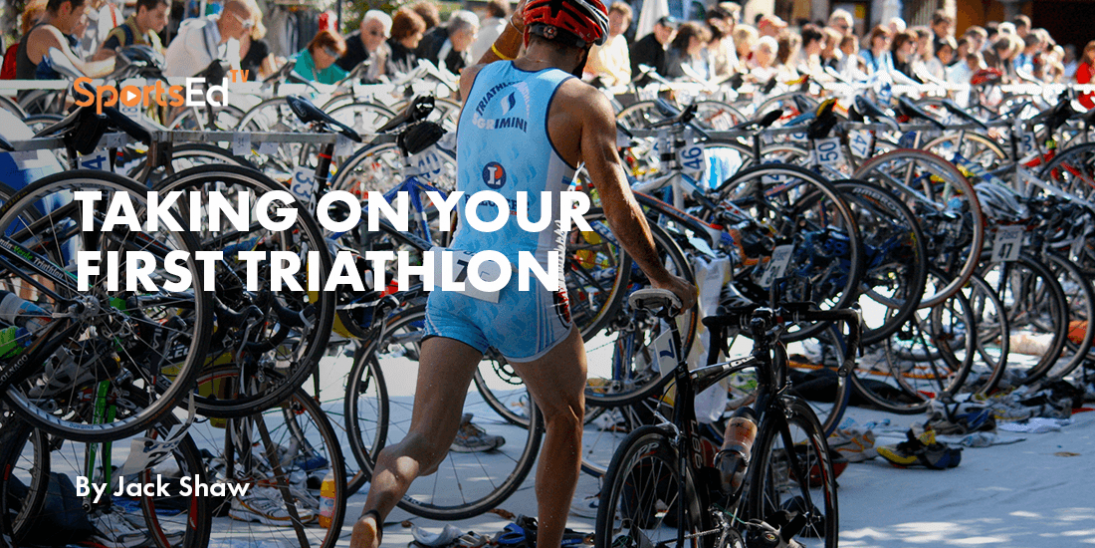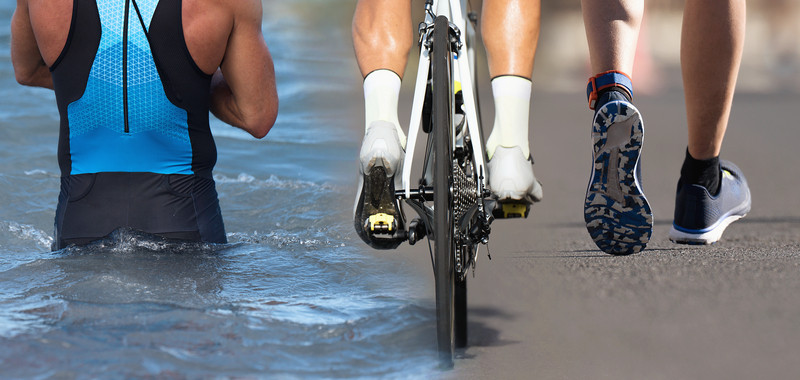Cycling, Running, Swimming
Welcome and thanks for visiting...

Taking on Your First Triathlon

Congrats, you’ve decided to tackle your first triathlon! What do you need to know to cross the finish line and feel good about your performance?
Seasoned race vets know what to expect, but even those with a dozen Ironmans under their belt benefit from other people’s knowledge. Newbies have tons of questions, from selecting the right training routine to deciding what race to enter and what to expect on the big day. We have the answers to your “my first triathlon” questions.
Your Training Routine
Triathlons consist of running, biking, and swimming, meaning you’ll need a varied training routine to hone your skills in each. Over the years, top athletic trainers have suggested workouts to get you to race day.
What Is the Ideal Triathlon Training Routine?
You should begin training for your triathlon at least 12 weeks before the event, although you might start gentle conditioning earlier, especially if you’ve historically led a sedentary lifestyle. You’ll need to dedicate two to three days per week to running, biking, and swimming, meaning you’ll stack some of your workouts.
For example, you can begin by running, swimming, and biking two days per week each. However, by week three or four, you should start adding a short run after one of your bike rides to simulate race day. You can also stack a bike ride after a swim. On other days, you’ll simply perform one activity to avoid overtraining and prevent overuse injuries.
Where Should You Train?
Your mind might automatically turn to joining a gym, but such a facility might not be your best choice for triathlon training. For example, swimming in rivers and lakes alongside other swimmers requires you to keep your head above water more than you would in a pool, lest you end up with a mouthful.
Furthermore, treadmills and stationary bikes burn calories but don’t simulate road conditions. While it’s okay to take your workout indoors occasionally, especially in inclement weather, keep it outdoors whenever possible.
Should You Hire a Trainer?
It’s a smart idea to hire a trainer, especially when one of two conditions apply. The first is when you’re a newbie — which likely applies if you’re reading this article. The other is when you sign up for a race featuring more treacherous obstacles than you’ve encountered previously, and working with someone accustomed to extreme terrain can adapt you to the challenge.
You can find a personal trainer by searching for one online with the words “near me” in the search parameters. The advent of the internet has ushered in online training, meaning you might book a coaching session or two with an elite trainer on the other side of the globe. Sites such as Thumbtack can help connect you with such individuals who are currently accepting new clients.
Dealing With Training Setbacks and Obstacles
Some setbacks, such as injuries resulting from freak accidents, are unavoidable. However, your lifestyle is more likely to interrupt your training. Consult your calendar before booking your race and ensure you don’t have any travel, minor surgeries, or big events, such as starting a new job or school semester, during your 12-week training period. If you do find any, mindfully examine whether you can work around them or whether you should choose a different race day.

Course Selection
Choosing the right initial triathlon can determine whether you fall in love with the sport — or say, “Yep, did it once, never again” after staggering across the finish line. Look for a course with a smooth route lacking major climbs, descents and obstacles. It should be well-marked, ideally allowing for two-way traffic and safe entry and exit points to the water.
As you grow your skills, you can apply different selection criteria to your triathlon choices. For example, is there a specific area of your racecraft, such as climbing hills, that causes you particular hardship? You might seek races that avoid altitude changes — or you might embrace the challenge and use the opportunity to strengthen a weakness.
How Long Is a Typical Triathlon?
You should also consider race length when planning your first triathlon. Believe it or not, it isn’t uniform. There are six basic triathlon distances that races fall into, including:
- Super sprint: 300-kilometer swim, 10-kilometer bike, 2.5 kilometer run
- Sprint: 500-meter swim, 20-kilometer bike, 5-kilometer run
- Olympic: 1500-meter swim, 40-kilometer bike, 10-kilometer run
- Half-Ironman: 1.2-mile swim, 56-mile bike, 13.1-mile run
- Ironman: 2.4-mile swim, 112-mile bike, 26.2-mile run
- Ultra: 6.2-mile swim, 263-mile bike, 52.4-mile run
As you can see, they vary widely in overall endurance — and training — requirements. A super-sprint or a sprint is a good first choice, especially if you’ve done other competitions, such as 5k road races. Heartier souls might start with an Olympic triathlon, but use your judgment. If you’re an athlete already, you might do okay, but there’s a reason only the best of the best compete every four years. It’s a challenge!
The Day Before Race Day
Rest and food are the orders of the day before your first triathlon. Although you might feel keyed up, you should avoid anything but the lightest exercise — some Yin or restorative yoga or a short walk is a good choice — and go to bed early.
Many triathletes prefer to carbo-load the day before their big event. Finally, you can dig into all the spaghetti you want guilt-free. Just keep it healthy — include a few greens and other veggies, like spinach, basil, tomatoes and peppers, in the sauce to provide a hefty dose of phytonutrients with all that whole-grain goodness. Avoid white flour if possible, as your body burns it quickly, like sugar — the whole grain stuff takes longer to digest and provides a feeling of ongoing fullness.
Most races have a meet-and-greet the day before race day to distribute your T-shirt, timing chip, and other goodies. Planning to attend will make getting your gear one less thing to worry about on race day.
The Day of the Race
Arrive bright and early and find your division. Most triathlons allow a squad of elite athletes to launch before the rest of the racers, so listen to instructions.
Have your support squad await you at the finish line. Most races provide finishers with a medal, and some throw quite the after-party with entertainment. You might want nothing more than to collapse, but stay and savor your victory as long as you can — for everyone who finishes one of these elite races is a champion.
Tackling Your First Triathlon
Tackling a triathlon is a fantastic feeling. You overcome a lot and learn much about yourself during training, gaining a sense of agency and confidence that you can take on anything. With the right approach, you can rock your first race day and enjoy many subsequent events in years to come.








